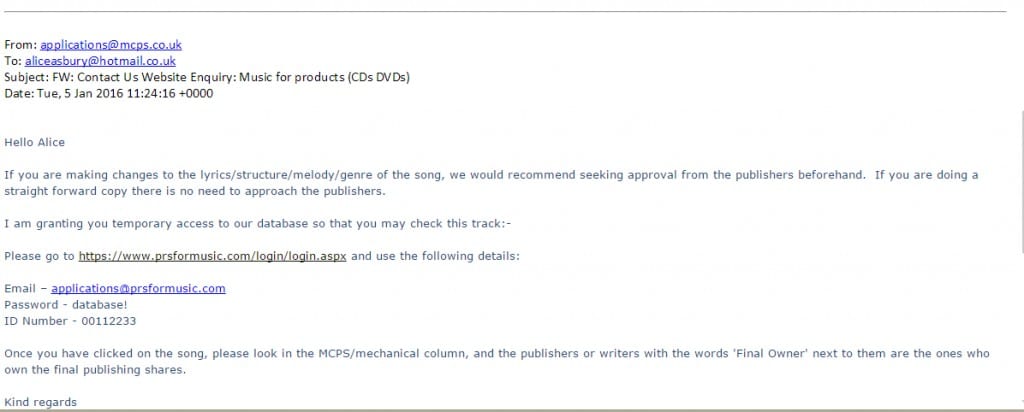The sound script we devised and communicated to our client contained a number of ‘key’ audio scenes. This post will discuss a few of these and how they panned out or didn’t, as the case may be, and as such the post will make considerably more sense if tackled after you have watched the piece.
One of the main motifs of the sound design in ‘George’ was intended to be the sound of the outside world encroaching on the protaganist’s home as a metaphor for his level of anxiety or distress at any given point in the film. However, we rapidly discovered it is very easy for audio devices such as the sound of people passing by outside the walls of the kitchen to be distracting when there has been no visual suggestion of their source. In the end, we attempted to turn the constant traffic noise which plagued our location recordings (and which is, coincidentally, perfectly setup visually in the opening scene of the film and reinforced repeatedly throughout by fortuitous edits) to our advantage by using it to signify the threatening outside world encroaching on George’s anxious existence. In reflection, I think we convinced ourselves that this worked better than it did because we didn’t do enough detail work to the films atmosphere layers – whilst the outside does very much burst in on occasion, for me the question is ‘on what?’. That suggests I didn’t do enough to bring out the sound design of the base atmospheres, such as incorporating small details ala Green Mile. This is in line with Mangini’s idea of –
“…the sonic equivalent of LIGHT and SHADOW. I learned from Joe Dante how painters use a touch of blue to make white seem “whiter”. An old visual trick to give texture to something that is textureless. I extrapolated this idea to the silence of the MILE. To create silence I needed to “define” the space with little sounds that highlight the emptiness.” – (Mark Mangini).
George’s textures have plenty of shadow but not quite enough light, in my estimation.
The bread and butter scene is the most infamous of the project, and was initially supposed to be a chance for the film to hint at the dark past of it’s main character. We’d planned to refer to his previous, violent crime with the audio landscape around the slicing of a bread loaf by making the sounds associated with this action a little more visceral than realistic, and by subtly weaving the scene with screechs, yelps and whimpers in a process often referred to as ‘sweetening’. Unfortunately, this scene was axed due to health and safety evangelism on set and replaced with a shot of George buttering pre-sliced bread. We felt it would be inappropriate and off-putting to attempt to apply the same audio components to the new scene, feeling that no amount of audio work can add an undercurrent of menace to Kingsmill, and opted for the music cue becoming the focus of the scene.
Upon George’s final return to his home in the evening after the graveyard scene, we were asked to provide the sound of music being played at high volume through the walls of the house from next door (ostensibly by the teenagers who are introduced earlier in the film). We had developed a complex system of audio segues from one scene to another rooted in the idea of having ever-present music pumping through the walls, including morphing the bass thump of the beat into a heartbeat and then into a variation of our main score and a variety of interesting perspective shifts depending on George’s location in the house, as well as weaving further references into the music choices themselves, if possible. The entire plan proved unworkable as the directors failed to film any visual reference to a source for the music, and we collectively abandoned the idea in concord with the second director during post.
Finally, the BBC report playing on the radio after the opening credits was a late addition because we felt the scene was just too devoid of activity and needed something to invigorate it and give it a focus which didn’t overwhelm or detract from the very stilted visuals. Talk radio makes great audible wallpaper, and we requested and were granted use of the Radio 4 piece in the context of this film by it’s producer at the eleventh hour (though not before recording our own re-scripted version in a similar style to get around the potential copyright problem). The dialogue in the R4 piece encapsulates some of the premise of the film right at it’s outset, and very much supports the story and character development of the piece.
In reflection on these points, I think it can safely be said that no battleplan survives contact with the vicissitudes of filming and I found it necessary to be extremely flexible as some of the plans were forced to change, without compromising the overall audio arcs and themes of the piece.
– 800 words
—————————————
KEY POINTS
Planned aspects of the sound script – Planning, Application of skills and conduct in production
- To judge the initial direction of and maintain the consistency of the overall tone of the audio team’s work on the piece, and liase with the director to ensure this is concurrent with their vision of the piece.
- Develop creative, original, and innovative strategies within an audio production project.
- Structure intellectually rigorous and coherent ideas to an advanced level in order to communicate ideas through the integration of form and content.
